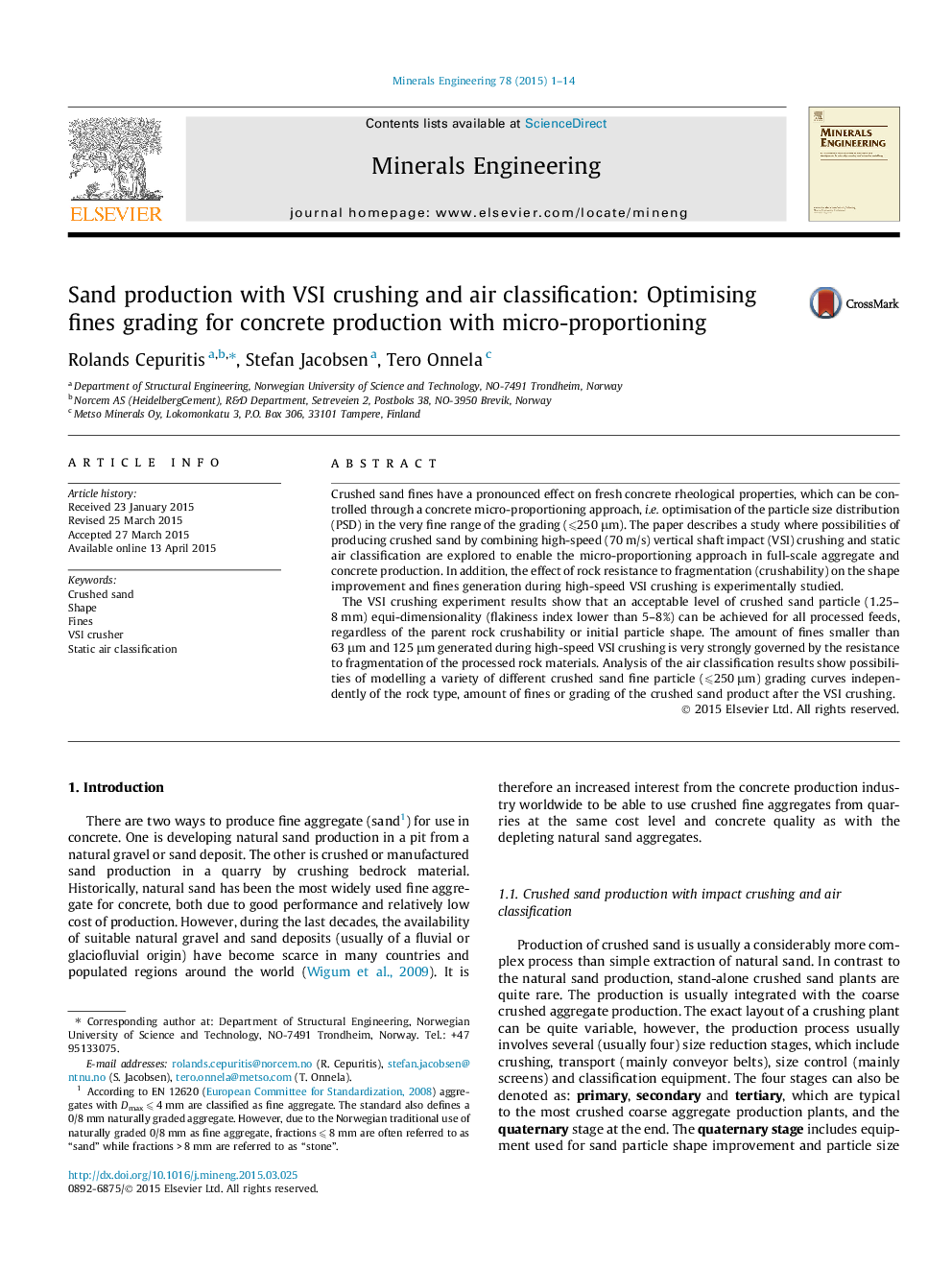| Article ID | Journal | Published Year | Pages | File Type |
|---|---|---|---|---|
| 233044 | Minerals Engineering | 2015 | 14 Pages |
•Crushed sand with optimised fines grading can be produced.•Amount of fines generated during VSI crushing depends on rock crushability.•Air classification enables micro-proportioning for full-scale aggregate production.
Crushed sand fines have a pronounced effect on fresh concrete rheological properties, which can be controlled through a concrete micro-proportioning approach, i.e. optimisation of the particle size distribution (PSD) in the very fine range of the grading (⩽250 μm). The paper describes a study where possibilities of producing crushed sand by combining high-speed (70 m/s) vertical shaft impact (VSI) crushing and static air classification are explored to enable the micro-proportioning approach in full-scale aggregate and concrete production. In addition, the effect of rock resistance to fragmentation (crushability) on the shape improvement and fines generation during high-speed VSI crushing is experimentally studied.The VSI crushing experiment results show that an acceptable level of crushed sand particle (1.25–8 mm) equi-dimensionality (flakiness index lower than 5–8%) can be achieved for all processed feeds, regardless of the parent rock crushability or initial particle shape. The amount of fines smaller than 63 μm and 125 μm generated during high-speed VSI crushing is very strongly governed by the resistance to fragmentation of the processed rock materials. Analysis of the air classification results show possibilities of modelling a variety of different crushed sand fine particle (⩽250 μm) grading curves independently of the rock type, amount of fines or grading of the crushed sand product after the VSI crushing.
Graphical abstractFigure optionsDownload full-size imageDownload as PowerPoint slide
